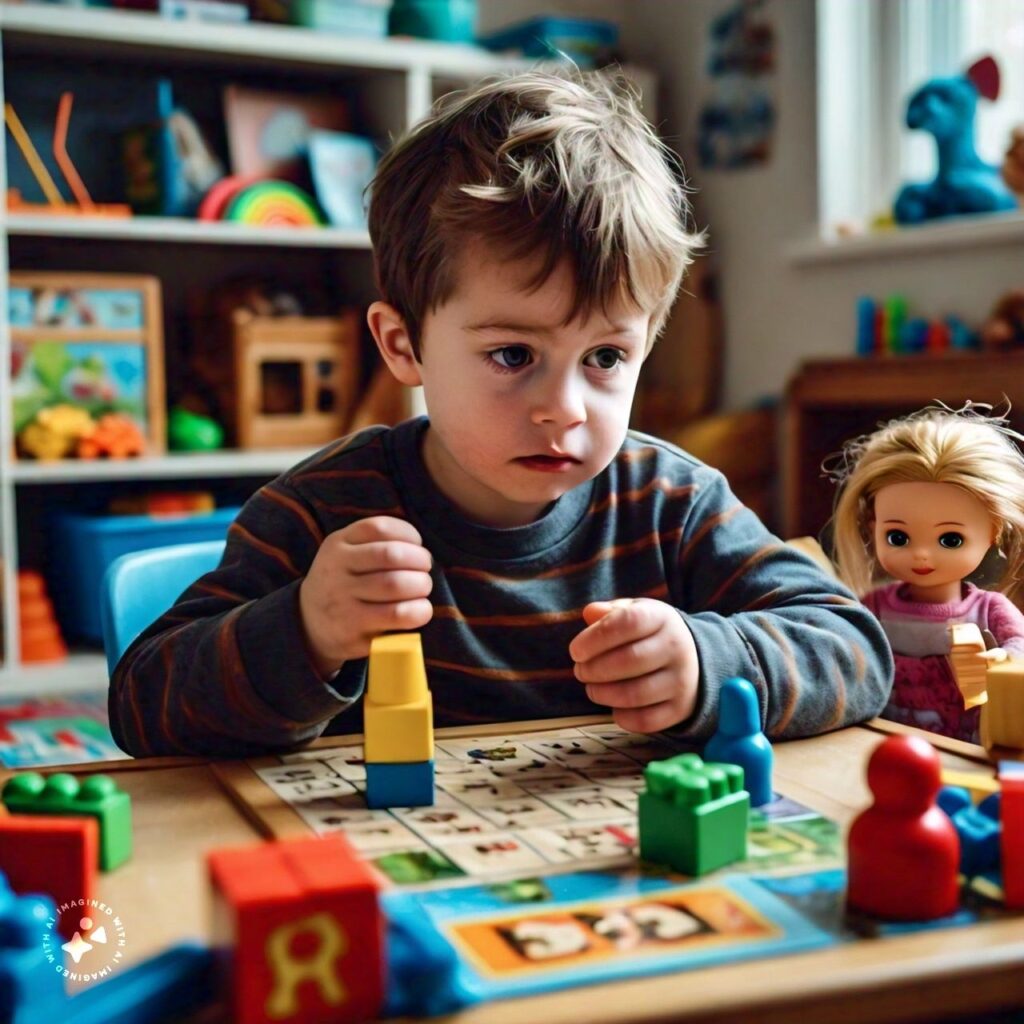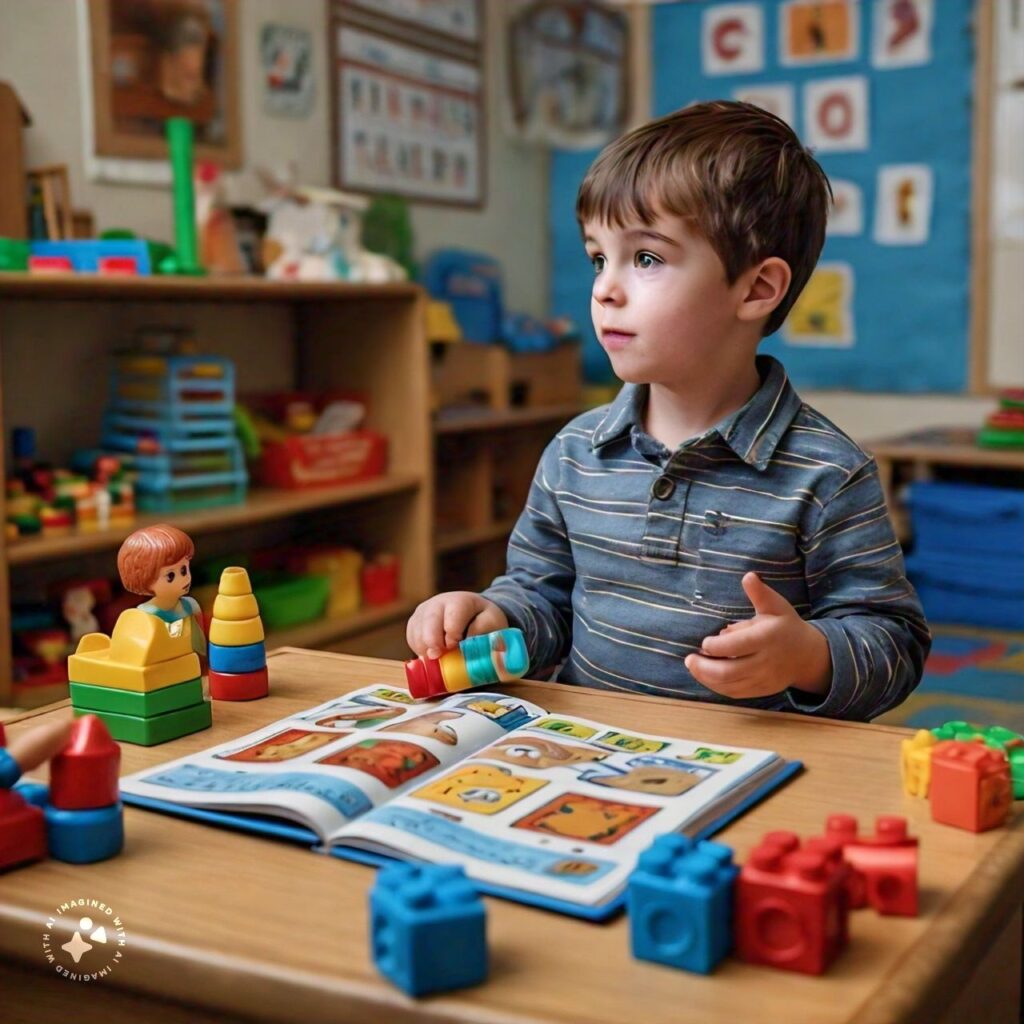Written by Najwa Bashir
Language Disorder
Language disorder is characterized by problems with vocabulary understanding and sentence structure, which lead to deficits in language learning and use. These problems can be noticed when sending and receiving information in spoken, written, and sign language.
Symptoms may include having a smaller or more limited vocabulary than would be expected for their age or not being able to put words together in a way that follows appropriate language rules. The individual’s speaking skills are drastically below what is normally expected for their age and level of growth, which causes a lot of problems in areas like social relationships and schoolwork. The signs must have started when the person was still developing.
Unfortunately, these issues usually last into adults, and receptive language problems are more likely to have a worse outcome than active language problems. Language disorders affect about 10 to 15 percent of kids younger than 3 years old, and boys are much more likely to have them than girls (Wilson &Scarpa, 2017).
Having a language disorder can make it hard to understand and/or use spoken, written, and other kinds of language. The form, meaning, or purpose of language may be difficult for students who have a language disorder. Disorders that affect how the brain processes language knowledge are called language disorders or language disabilities.
For a language student, the most common problems may be with grammar (syntax or morphology), meaning, or other parts of language. These issues could be receptive, like not being able to understand words well, or vocal, like having trouble making sounds, or a mix of the two. Learners with language disorders may have trouble with both spoken and writing words. It can be hard for someone to find the right words and make clear lines when they talk. This is called a language disorder. It can also be hard to understand what someone else is saying. A child might have trouble understanding what other people are saying or putting their thoughts into words, or maybe both.

One can see that a child has a very limited language and that his words are short, wrong, and missing parts. The child might not be able to keep up with his friends as they talk and joke around. He might miss the jokes. He might also only use two words at a time and have trouble answering even easy questions. It’s important to know the difference between a language disorder and a hearing or speech disorder.
Most of the time, kids with language problems don’t have any trouble hearing or writing words. The hard part for them is learning and using the rules of words, like spelling. They are not just “late talkers.” If they do not get help, their speech problems will get worse, which could cause mental problems and trouble in school (Bansal, 2019).
Diagnostic Criteria for Language Disorder
According to APA (2022), the following criteria needs to be met to be diagnosed with language disorder:
- Inability to learn and use language over time in any form (spoken, written, sign language, or other) because of problems with understanding or producing it, such as:
– Less understanding and use of words.
– Poor sentence structure (not being able to use grammar and morphology rules to put words and word ends together to make sentences).
– Having trouble with discourse means not being able to use words and put sentences together to talk, explain, or discuss a subject or set of events.- Language skills are significantly and quantifiably lower than what would be expected for their age, which makes it hard for them to communicate effectively, make friends, do well in school, or do well at work, either alone or in combination.
- The signs start in the early stages of growth.
- The problems arenot caused by hearing or other sensory loss, motor failure, or another medical or neurological issue. They also don’t make more sense if you think about intellectual disability or global developmental delay.
Diagnostic Features of Language Disorder
According to DSM 5 TR (APA, 2022), the following are the diagnostic features of language disorder:
- Trouble learning and using language due to having trouble understanding or producing words, grammar, sentence structure, and conversation. These language problems can be heard or seen when people talk, write, or use sign language. Both receptive and expressive skills are needed to learn and use a language. The latter is the ability to send messages through speech, body language, or vocalizations while the former is the ability to receive and understand language messages. Both language skills need to be tested because they can be different in how hard they are.
- People with language disorders often have problems with their words and spelling, which makes it harder for them to communicate. The child is likely to be late in starting to say words and phrases. His or her vocabulary is smaller and less varied than predicted, and sentences are shorter and less complicated, with a lot of grammar mistakes in the past tense. People often don’t give kids enough credit for their language learning problems because they may be good at using context to figure out what something means.
- Having trouble finding words, giving vocal definitions, or understanding synonyms, words with more than one meaning, or word play that is acceptable for their age and society. For people who have trouble remembering new words and sentences, it can be hard to follow instructions that get longer, practice long strings of spoken information (like a phone number or a shopping list), and remember new sound sequences, which may be valuable for learning new words.
- Trouble giving enough information about the main events and telling a story that makes sense. The language problem shows up as skills that are significantly and quantitatively below what is expected for the person’s age. It also gets in the way of school success, job performance, effective conversation, or socializing (Criterion B).
An individual is diagnosed with a language disorder after looking at their past, being directly observed by a clinician in various settings (such as home, school, or work), and their scores on standardized language tests that can help determine how severe the disorder is (APA, 2022).
Effects of Language Disorder on Daily Life
Many experts and members of the public still don’t know much about language disorder and its effects on children’s daily lives, even though it affects many areas of their lives (Lyons, 2021).

McGregor (2020) showed that these kids have a lot of problems that could make it hard for them to do well in school. They are six times more likely to have reading disabilities, six times more likely to have spelling problems, four times more likely to have math problems, and twelve times more likely to have all three problems. She also said that these kids were more likely to have problems in their mental and social lives. For example, they are six times more likely to have clinical anxiety and three times more likely to have clinical depression. Girls are three times more likely to be sexually abused, boys were four times more likely to act badly towards others, and adults were twice as likely to be unemployed for more than a year as other adults.
Conclusion
The article sheds light on the diagnostic features of language disorder. Considering the alarming consequences of the language disorder, it is important to identify its signs and seek professional aid on time in order to avoid the aforementioned struggles in the individuals’ academic and social life.
References
- American Psychiatric Association: Diagnostic and Statistical Manual of Mental Disorders, Fifth Edition, Text Revision (2022). Washington, DC, American Psychiatric Association.
- Bansal, S. K. (2019). A Study on Language Disorders in Learners. Research gate. Available from:https://www.researchgate.net/publication/338117828_A_Study_on_Language_Disorders_in_Learners
- Lyons, R. (2021). Impact of language disorders on children’s everyday lives from 4 to 13 years: Commentary on Le, Mensah, Eadie, McKean, Schiberras, Bavin, Reilly and Gold (2020). Journal of Child Psychology and Psychiatry, 62(12), 1485-1487. https://doi.org/10.1111/jcpp.13391
- McGregor, K. K. (2020). How we fail children with developmental language disorder. Language, speech, and hearing services in schools, 51(4), 981-992.https://doi.org/10.1044/2020_LSHSS-20-00003
- Wilson, L. C., &Scarpa, A. (2017). Child and Adolescent Psychopathology ☆. Reference Module in Neuroscience and Biobehavioral Psychology. https://doi.org/10.1016/b978-0-12-809324-5.06368-9
I am a passionate and knowledgeable psychologist, with a Master of Philosophy (MPhil) in Psychology specializing in Counseling Psychology. Through my writing, I share my insights and thoughts on various psychiatric disorders, conduct analysis on films that touch on psychological issues, and explore other topics related to psychology, while also providing valuable information to psychology enthusiasts, students as well the general community.





